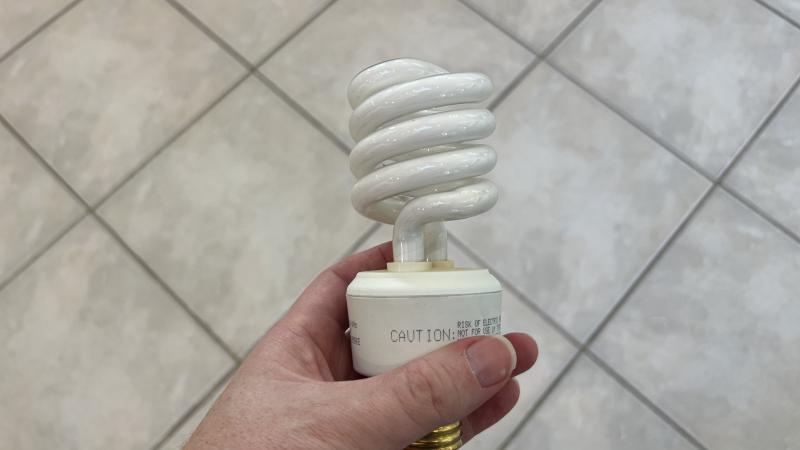Offshore wind opponents say federal agencies’ reports acknowledge offshore wind harms to whales
Whale advocates have a difficult time proving that a particular whale died as a result of injuries from the noise of offshore wind development, because the deaths are incidental to the reactions and injuries from noise levels, they say.
Republican presidential candidate Donald Trump took aim at the offshore wind industry during a three-hour interview with Joe Rogan last week. The former president said “windmills” harm whales, and he said he’d eliminate offshore wind power on the first day of his second term.
“I wanna be a whale psychiatrist. It drives the whales fricking crazy. And something happens with them, but for whatever reason, they’re getting washed up onshore and you know, they’re ignored by these environmentalists. But they don’t talk about it.” Trump said.
Trump claimed that it’s the operational vibrations of the massive structures that drive whales “crazy,” but it’s more the construction and vessel activity that experts say is causing the animals harm.
Unavoidable impacts
The Bureau of Ocean Energy Management (BOEM) concluded as much in a new report on the environmental impacts of six wind lease areas off the coasts of New York and New Jersey. The report finds that noise could harm fish, marine mammals, sea turtles and birds, resulting in habitat displacement and disruptions to migratory patterns.
The report includes details on mitigation measures that can be taken, but it concludes that offshore wind development “would result in unavoidable adverse impacts.”
Robert Rand, founder of the acoustics consultancy company Rand Acoustics, has surveyed noise levels from pile driving and sonar survey vessels. Both of his independent studies found that the incidental harassment authorizations, which are permits that offshore wind developers are required to obtain to conduct activities that might threaten marine animals, don’t impose sufficient mitigation requirements to protect marine animals.
Rand told Just the News that the report shows that federal agencies may be backing away from their insistence that offshore wind isn’t harming marine wildlife. “Any concession by federal agencies that they are injuring marine species is both a step in the right direction and also damning to the agencies charged with implementing the MMPA [Marine Mammal Protection Act] and ESA [Endangered Species Act],” Rand said.
Installation of offshore wind towers requires that 30-foot wide monopiles be pounded into the seabed floor with special ships. Rand said his studies showed that even with the full complement of noise controls that the National Oceanic and Atmospheric Administration (NOAA) requires, the pile driving makes a sound as loud as 2000-psi seismic airguns. The equivalent noise level in the air is a 155mm Howitzer blasting every two seconds, he said.
Rand said developers have no feasible means of noise control, except maintaining sufficient distance from any marine wildlife. However, NOAA is permitting the machinery inside endangered whale and marine species habitat, so safe distances can’t be maintained.
Nothing new
Dr. David Wojick, senior policy advisor for a Committee for a Constructive Tomorrow, told Just the News that the BOEM report for the wind lease areas doesn’t contain any new findings. He said there are draft environmental impact statements that precede each wind project. These are prepared jointly between BOEM and NOAA, such as the environmental impact statement (EIS) report for the Empire Wind project off the coast of New York. They include an assessment of the environmental impacts for NOAA’s harassment authorizations.
The EIS report for Empire Wind states, “It is possible that pile driving could displace animals into areas with lower habitat quality or higher risk of vessel collision or fisheries interaction.”
“Notice that this doesn’t say that any whale has actually been killed, and that’s important. They still claim there’s no evidence that the whales are being killed,” Wojick said. He said that offshore wind developers receive Level A and Level B harassment authorization. Level A harassment includes activities that could result in permanent deafness in marine animals, Wojick explained, and the permits estimate the number of animals that will be impacted in this way. The developers are required to implement various mitigation measures, which are supposed to prevent the activities from exceeding this number.
He said the denials of environmental groups, federal agencies and offshore wind developers exploit a lack of a direct causal relationship to deny any harm to whales. Whale advocates have a difficult time proving that a particular whale died as a result of injuries from the noise of offshore wind development, because the deaths are incidental to the reactions and injuries from noise levels, they say.
“Of course, no one is claiming that the pile driving or the sonar surveys are outright killing the whales. That's a trick that they use,” Wojick said. He compared it to a kid throwing fireworks on the sidewalk and some dogs turning up dead in the street. While the autopsy of the dog shows that it was hit by a car, it’s the fireworks that caused the dog to run into traffic.
“Rather than hold to their mandate by law, NOAA has issued hundreds of thousands of ‘takes’ for noise harm, including takes on the critically endangered North Atlantic Right Whale, an already noise-burdened species with risk classification ‘Major.’ the most serious classification,” Rand said. “This is disgraceful and unconscionable.”
Other impacts
Rand said there are other issues that the report and federal agencies still aren’t addressing. A 2017 study found that seismic airguns with sound levels comparable to pile driving kill krill and zooplankton, which the whales consume for food. A complex food chain with zooplankton, he said, exists throughout the ocean, and killing them will directly impact the marine food web.
“I find it disturbing that so-called environmental groups have railed against seismic airguns, for decades, because of the noise harm on whales, but equally shockingly loud noise levels from pile-driving for offshore wind brings no reaction at all. Noise harm is noise harm,” Rand said.
As many offshore wind opponents have been pointing out in the wake of the broken blade incident off the shores of Nantucket, Rand said the impacts of blade incidents haven’t been considered in any of the environmental impact assessments.
While it’s true that direct causal proof that offshore wind is hurting whales is missing, there is evidence that these projects are harming whales. The industry’s critics say more attention should be given to how these impacts are the cause of the increased whale mortality in the Atlantic Ocean.
The Facts Inside Our Reporter's Notebook
Links
- three-hour interview with Joe Rogan
- new report
- Rand Acoustics
- pile driving
- sonar survey vessels
- incidental harassment authorizations
- pounded into the seabed floor
- Committee for a Constructive Tomorrow
- environmental impact statement (EIS) report
- Level A and Level B harassment authorization
- 2017 study found
- railed against seismic airguns
- many offshore wind opponents
- increased whale mortality
















